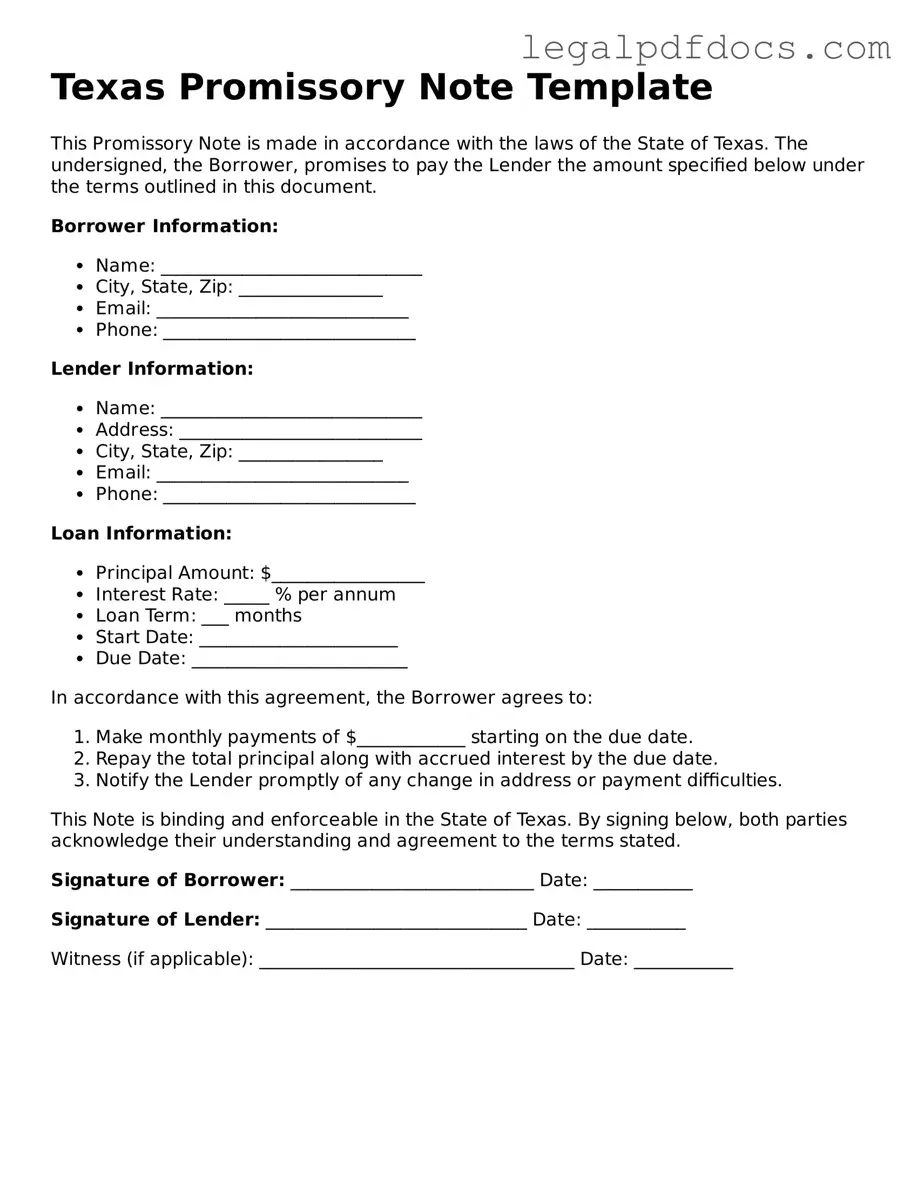Official Promissory Note Form for Texas
A Texas Promissory Note is a written promise to pay a specified amount of money to a designated party under agreed-upon terms. This legal document serves as a crucial tool for both lenders and borrowers, ensuring clarity and accountability in financial transactions. To get started on your own Promissory Note, fill out the form by clicking the button below.
Open Promissory Note Editor Here
